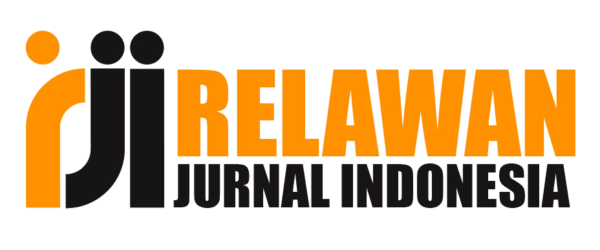TINJAUAN MORFOLOGI PUSAT KOTA LAMA MARISA KABUPATEN POHUWATO
Abstract
The city of Marisa has rural urban characteristics (rurbanization) and has grown and developed into a new growth center in the western region of Gorontalo Province because it is supported by city facilities. This research method is qualitative descriptive research. The use of qualitative methods is used to study the physical development of the city. Meanwhile, this qualitative approach is based on postpositivism philosophy. In this research, the development phases of Marisa City are divided into the first development phase (1980-2000) and the second development phase (2001- 2017). The population in this research is all villages/sub-districts in Marisa City. Octopus morphology (octopus shaped/star shaped cities) in activity center areas, especially trade and services or housing and settlements. Building density is an area that is the percentage of built-up areas compared to the total built-up area. Deviations from the Towulongo traditional concept include the placement of the town square (field) on the right side of the regent's office and the orientation center which functions to tie together all the buildings around it so that the placement of the buildings becomes irregular.
Keywords
Full Text:
PDFReferences
Adisasmita, Rahardjo., 2015. Teori Pertumbuhan Kota. Graha Ilmu. Yogyakarta.
Gospodini, A., 2001. Urban Design, Urban Space Morphology, Urban Tourism : An Emerging New Paradigm Concerning Their Relationship. Europen Planning Studies, Vol.9 No.7. Taylor and Frencis Ltd. pp : 925-934.
Jayadinata, T. Johara., 1999. Tata Guna Tanah Dalam Perencanaan Pedesaan, Perkotaan dan Wilayah. Bandung. Penerbit ITB.
Jayadinata T. Johara dan Pramandika, I.G.P,.2006. Pembangunan Desa Dalam Perencanaan. Penerbit ITB. Bandung.
Pontoh, K. Nia dan Kustiawan, Iwan., 2009. Pengantar Perencanaan Perkotaan.
Bandung. Penerbit ITB.
Rudiarto, I. 2010. Corruption on Land Use Planning and Land Regristration-Cadaster Process: An Analysis of Causes and Consequences. Lap Lambert Academic Publishing. Weikersheim. Germany.
Rudiarto, I. Wiwandari, H., Bitta, P dan Pangi., 2013. Zona Peri-Urban Semarang Metropolitan: Perkembangan dan Tipologi Sosial Ekonomi. Biro Penerbit Planologi Undip. Tata Loka, vol 15 (2), pp: 116-128.
Soetomo, S. 2009. Urbanisasi dan Morfologi : Proses Perkembangan Peradaban dan Wadah Ruang Fisiknya Menuju Ruang Kehidupan Yang Manusiawi. Graha Ilmu. Yogyakarta.
Sugiyono, 2014. Metode Penelitian Manajemen : Pendekatan Kualitatif, Kuantitaitif, Mixed Methods, Action Research dan Penelitian Evaluasi. Cetakan Kedua. Alfabeta. Bandung.
Tacoli, C., 2003. The Links Between Urban and Rural Development. Journal Environment and Urbanization. pp : 3-24.
Tacoli, C., 2004. The Role of Small and Intermediate Urban Centres and Market Towns and the Value of Regional Approaches to Rural Poverty Reduction Policy. IIED. Helsinki. pp : 1-27
Tarigan, R., 2007. Ekonomi Regional : Teori dan Aplikasi. Edisi Revisi. Penerbit Bumi Aksara. Jakarta.
Yunus, H. Sabari., 2011. Manajemen Kota : Prespektif Spasial. Yogyakarta. Pustaka Pelajar.
Zahnd, M., 2006. Perancangan Kota Secara Terpadu : Teori Perancangan Kota dan Penerapannya. Kanisius-Unika Soegijapranata University Press. Yogyakarta.
Refbacks
- There are currently no refbacks.
Copyright (c) 2025 Irwan Wunarlan

This work is licensed under a Creative Commons Attribution-ShareAlike 4.0 International License.
ISSN CETAK: XXXX-XXXX

This work is licensed under a Creative Commons Attribution-ShareAlike 4.0 International License.







